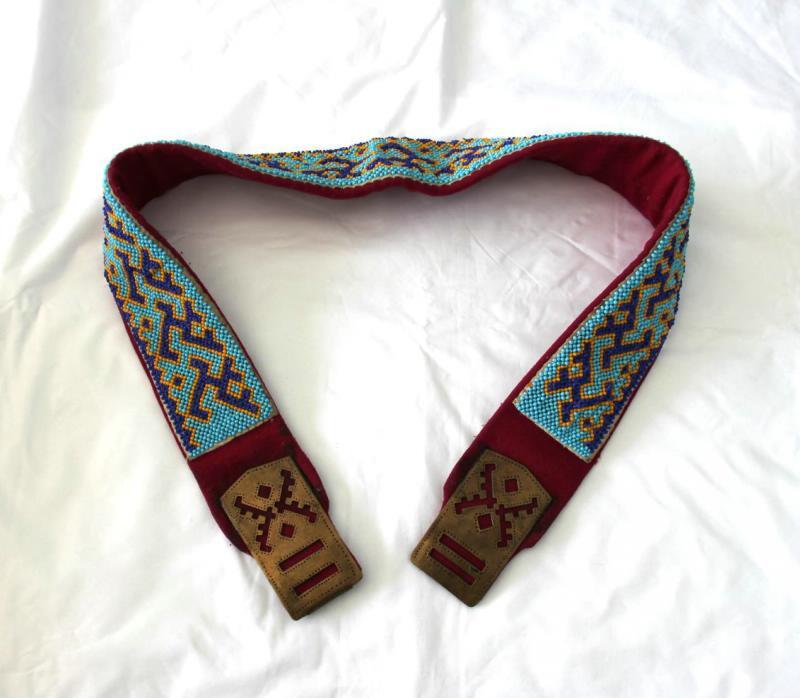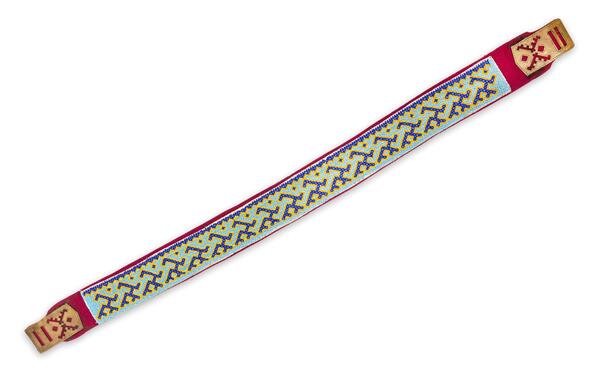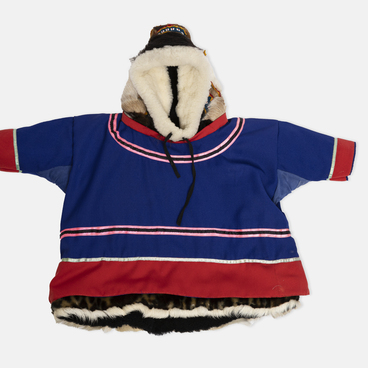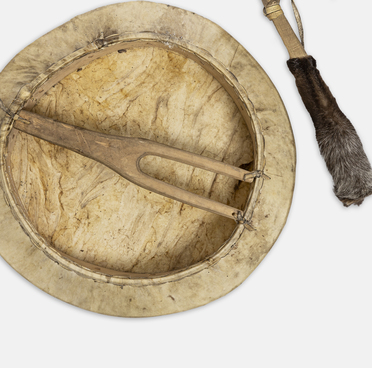A belt has always been an essential element in the clothing of the indigenous peoples of the North. It is used to secure dresses and coats with or without a front opening and also helps to carry belongings without a bag and pockets. The Khanty have belts of several types, designed for men, women, boys, and girls. Children master crafts and study social roles by imitating adults, which is why children’s belts are miniature copies of the ones used by adults.
Eastern Khanty women wear a fabric belt with lining and beadwork. It is made by hand and meticulously decorated. There is also another type of belt which is made using a premade beaded band that is sewn to the base.
Beadwork is an essential element of traditional Khanty and Mansi culture. There are several techniques, including bead embroidery and weaving. Bead embroidery is used to decorate clothes, headdresses, footwear, belts, braid and pectoral jewelry, mittens, and hunting masks.
Beadwork always has an applied side, which is clearly related to the object’s function, shape, and material. Each pattern has its own meaning — it can reflect various aspects of life and include encrypted messages from ancient legends. The décor of northern clothing has three functions: communicative, magical, and aesthetic.
On both sides, a women’s belt can be equipped with a copper buckle with carved patterns: for the northerners, metal symbolizes purity. At the buckle, women fold the belt twice to make it wider and tighter. A woman’s belt also has an additional function — it supports the woman’s abdomen and protects her from pelvic diseases, especially after childbirth. Moreover, the belt helps to secure the clothes and keep the wearer warm even in strong winds and frost.
The belt from the collection of the Ethnographic
Museum of the Varyogan Village was made by hand using a leather strap. It is
lined with red cloth and decorated with a wide band of beadwork with the
popular “birch branch” pattern. For the Khanty, the birch is a sacred tree and
one of the symbols of female energy. Birches are mentioned in many prayers,
songs worshiping gods, legends, and oracles.





